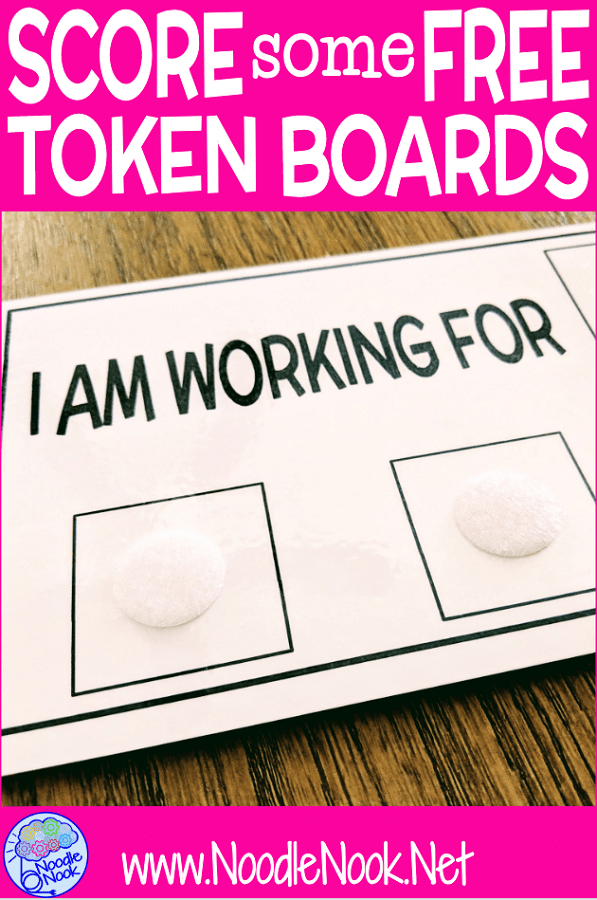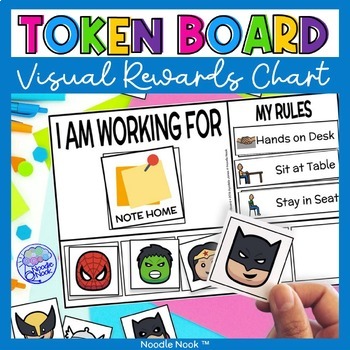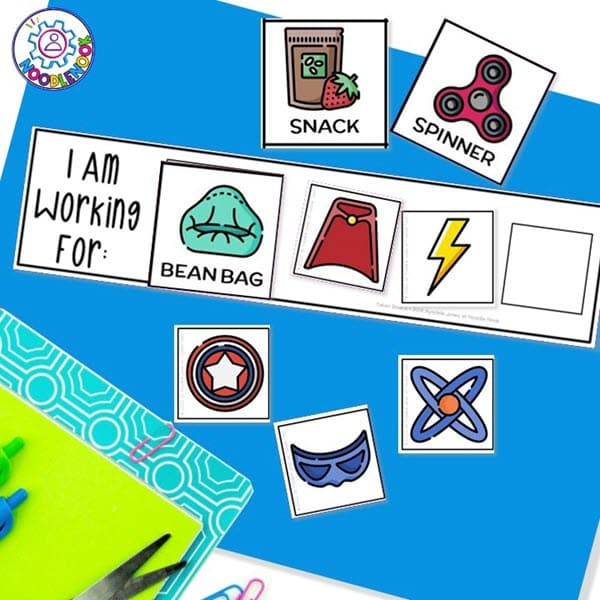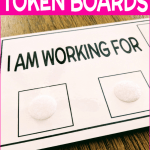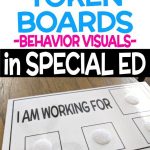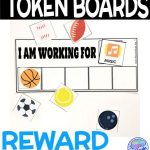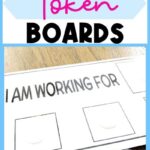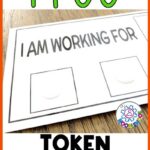I love, love, love token boards! If you have never used one before, then you are missing out. It is a powerful tool that, surprisingly, mirrors many nuances of adult life. Do you want to learn more about what a token board is, how to use a token board system, or get some more ideas about token boards in your classroom, then check out this post HERE. If you are looking for some free token boards, token board templates, or a token board PDF you can print and go with, then keep reading!

Token Boards in Special Ed
So, in case you need a quick refresher, a token board is a positive reinforcement tool used to shape behaviors in the classroom. It is a way to reward desired behaviors and deter negative behaviors. Token boards work by giving students something preferred in exchange for some desired behavior (like working, following the rules, or completing a task).
A token board requires you to do a couple of different things. It required you to follow the rules. Students have to defer instant gratification in exchange for working towards longer goals. Token boards also allow students to make some choices about their rewards. And all these skills are super helpful for adult living and life skills.
I’ve used the boards consistently for years. I advocate for people who are working through challenging behaviors in their classrooms to use it as their first line of defense.
More About Token Boards
If you want to read more about how to start with token boards or reward systems in your special ed classroom or Autism unit, then click here.
I have used this at home with my son who is gifted and talented. He is in upper elementary and sometimes not motivated to do certain kinds of classwork at school.
This token system works for his special population too! I have won over several of his teachers to use the system. You can read more about how his general ed teacher used the system with GT students. I have also used this with my other son who is in preschool. He has a very short attention span and likes what he likes. Like magic, this works with him like a charm!
This behavior tool really does work on several levels of students to address a bevy of behaviors. It is worth the time to put it together and keep it on hand.
If you are looking for help on how to use a token board or how to fade a token board, then pop over and start HERE.
Where to Find FREE Token Boards
There are several you can score online for free. There are three FREE token boards to get you started:
- Hands in Autism via Indiana University has some great info on reward systems as well as a free printable board. Click Here for IU’s Free Board.
- My Ability Kit has 10 free printable token boards. I personally love the rocket ship! Click Here for My Ability Kit.
- Columbia Regional has a free printable token board. It is a little simple, but will work in a pinch and, again, is free. Can’t argue with free. Click Here for Columbia’s Free Board.
There are several different ways to make these free boards more personalized. Try adding icons your students love or writing rules on the card to add that element. With these free token boards, you are able to get a great start and personalize as you need.
More Boards
Are still looking for something your students will LOVE? I suggest the token boards available from the on TpT or direct from me.
Just a few dollars will get you a product you can use over and over again for years. With so many token options, you can entice loads of different students. Check that out by visiting the digital store.
What Next?
Are you still reading?
Not sure what to do next?
Okay, let’s break things down. A simple token board is a great way to help students with an autism spectrum disorder to have good behavior, complete tasks, or find the motivation to do the things they may not necessarily want to.
Interests & Preferences
One of the most important things to know when you use any token economy system is what a student will work for. Completing a preference assessment can help a lot with this. Ask yourself if they prefer tactile rewards, like a tasty treat, a preferred item, or access to a place or person. Have the primary reinforcer handy, but also a good selection of secondary reinforcers too. You can use icons for the visuals, but picture cards work too. You can take those with your cell phone’s camera to make it extra easy.
The Pieces
The next thing to do is get all the necessary items to create a perfect visual reminder for your students. You can use those visual images if that’s what’ll work best for your student. You can also use different themes for your token economies, based on student interests and preferences. This is all about individualized support that’ll get that appropriate behavior from a student. We want them to give us the correct response or appropriate behavior. That means buy-in is huge in this process.
Put It Together
Token boards are the best behavior modification tool for students with special needs. That means you have to put it together in a way that will be durable. Laminate all the pieces and add velcro dots. (And remember to put the prickly velcro dot on the tokens, not the board). Even though you have a set number of tokens on the board, always have extra token pieces available. In other words, plan on pieces being lost or destroyed.
You can also laminate it and use a whiteboard marker to keep the lost tokens out of it. Maybe you choose to put this visual reward system on the students desk so that it’s clearly visible, even if that makes it less portable. If all else fails, use bingo chips as durable large tokens or stickers with smiley faces on a consumable board to get those same positive behaviors you’re looking for. However you choose to put this together, make sure it’s durable and made to last.
Keep On Reading
If you are faced with some challenging behaviors and need some extra support, then check out this post on the Function of Behavior and What To Do About It.
Are new to special education and are wondering about the visuals you need? Then pop over to this post about a Daily Visual Schedule.
Do you already know you are going to be dealing with behaviors in your classroom? Then you may want to check out this post about Calm Down Corners in the Classroom too.
Otherwise, if you are still reading, you must feel like you have a lot to learn. If you are still unsure which direction to go in first, try this. Sign up for the Noodle Nook newsletter below. You’ll get helpful tips, tricks, and FREE resources in your inbox every month. Literally, every month I will send you free resources, links to blog posts, and great tips too. #TeacherWin

